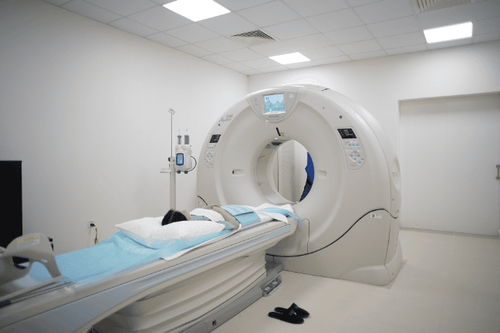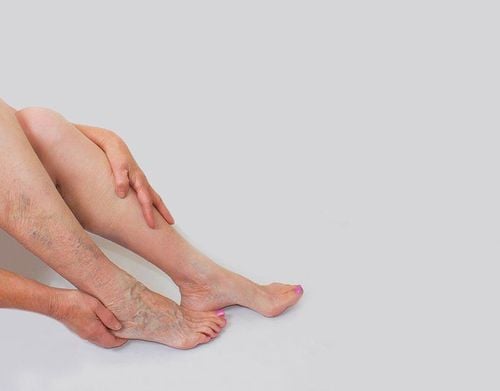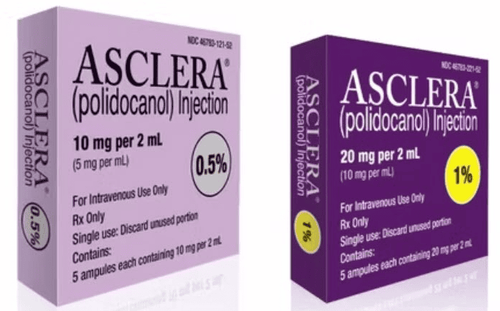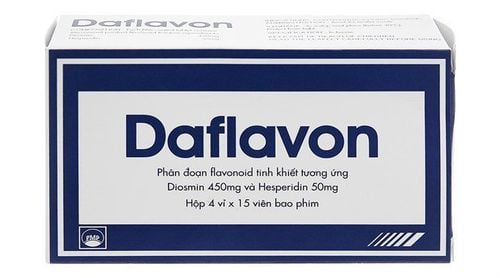This is an automatically translated article.
Peripheral vascular disease (peripheral vascular disease) is a disease of peripheral vascular occlusion in the pelvis, lower extremities, and upper extremities due to atherosclerotic plaques and thrombosis. The disease can lead to limb gangrene, heart attack, stroke or even death.1. Methods of diagnosis of peripheral vascular disease
Doctors typically use a variety of methods below to diagnose peripheral vascular disease.1.1. Clinical examination
In the diagnosis of peripheral vascular disease, clinical examination plays a very important role. The doctor usually examines the patient in detail as follows:Look: Assess the limb shape, observe the lesion location, skin color, skin nutrition status, hair condition, nails, superficial veins under the skin. and muscle condition. Palpation: Assess edema of the affected limb, skin temperature, muscle tone, and skin sensation. The doctor can also palpate the arteries of the femoral, popliteal, anterior tibial, posterior tibial, axillary, arm, wrist rotation,... determine whether the pulse is regular or irregular, strong or weak, fast or slow,... Auscultation: Use a stethoscope placed in the path of an artery or a suspected vascular lesion to diagnose the disease. Measurement: Use a tape measure to measure the size of the limbs in certain areas and compare with the healthy side to assess the degree of edema or deformity of the injured limb. Perform some clinical tests in examining the venous system of the lower extremities to evaluate the superficial venous valve, the perforating vein valve, the deep vein valve,...

Thăm khám lâm sàng giúp chẩn đoán bệnh mạch máu ngoại vi
1.2. Check pulse index wrist - ankle
This is a simple, painless exploration method that the doctor can easily perform in just a few minutes. By comparing the blood pressure in the patient's wrist and ankle, the doctor will assess the speed of blood flow in the legs. Normally, the blood pressure in the ankle is at least 90% of the blood pressure in the hand. However, with peripheral vascular disease, the blood pressure in the legs can be less than 50% of the blood flow in the hands.1.3. Other diagnostic methods
Vascular multi-slice computed tomography (MSCT) angiography: A non-invasive exploratory method, allowing to reconstruct images of vascular lesions clearly with high accuracy. The results obtained allow the physician to widely evaluate the arteries suspected of injury such as the abdominal aorta, iliac artery, and limb arteries. This method is useful for patients with a history of pacemaker or stent placement. Doppler ultrasound of blood vessels: Is a non-invasive diagnostic method, using sound waves to evaluate the flow rate, flow direction, pressure, flow,... of blood vessels to identify the blood vessels. congestion condition. Magnetic Resonance Imaging (MRI): Provides similar information to computed tomography angiography but does not use X-rays. However, this method cannot be applied to patients with a history of pacemaker placement. Contrast angiography: It is a method of injecting contrast material into a blood vessel and the image of the blood vessel will be clearly shown under the fluorescein screen so that the doctor can detect the location of the blockage and the extent of the damage. In addition to diagnostic value, this method also allows doctors to combine treatment of peripheral vascular disease by dilating or placing stents at the damaged site.
Chẩn đoán bệnh mạch máu ngoại vi bằng phương pháp chụp cộng hưởng từ
2. How to treat peripheral vascular disease
The principle of disease treatment is to reduce pain symptoms, prevent bad outcomes of the disease such as amputation, angina or stroke. Doctors will recommend the appropriate treatment for the patient based on the general health condition and severity of the disease. Specific methods are:Exercise The most effective treatment for peripheral vascular disease is regular exercise. Patients can start with gentle exercise by walking or doing leg exercises 3-4 times a week. This remedy can reduce the symptoms of the disease after a few months. Although the effect is quite slow, this is the most basic treatment method, causing no side effects for patients.
Adjust the diet Many people with peripheral vascular disease have high cholesterol. Therefore, the effective treatment is that in addition to medication, patients need to apply a diet low in cholesterol and saturated fat to reduce blood fat and limit atherosclerosis.
Quit Smoking Cigarette smoke is a risk factor for peripheral artery disease, heart attack, and stroke. Therefore, if you are smoking, you should quit immediately to slow down the progression of peripheral vascular disease and other cardiovascular related diseases.
Medication use Doctors may prescribe medications to lower blood pressure or regulate blood lipids. The drugs of the cilostazol group, pentoxifylline have the effect of reducing blood viscosity, reducing blood clot formation, and improving the flow rate of blood vessels. Antiplatelet drugs such as aspirin, clopidogrel also help prevent blood clots that cause thrombosis.
Interventional therapy through the catheter Besides the above methods, some patients with peripheral vascular disease need to undergo interventional treatment. Interventional methods include dilatation or stenting of the arteries. Doctors insert a small catheter through the skin into an artery to remove the clot and then use a small balloon to inflate it into the artery to widen the blocked site. A stent (special metal holder) will be placed in place of the blockage to limit the risk of re-narrowing of the blood vessel.
This is a method to help improve the severity of the disease. Therefore, after the stent is placed, the patient still needs to be persistent in taking the drug as prescribed by the doctor and maintaining a healthy and scientific diet and exercise regimen.
Surgery This treatment of peripheral vascular disease is applied in cases of complete occlusion of a long vascular segment and patients with symptoms of severe limb ischemia. When performing surgery, the doctor removes a piece of blood vessel (usually a vein) from another part of the body to bridge the blockage to the blood vessels that feed the lower extremity where the blockage is. After surgery, the patient needs to adhere well to the medication and maintain a scientific lifestyle as directed by the doctor.

Bác sĩ bệnh viện Vinmec điều trị bệnh mạch máu ngoại vi trong phòng mổ Hybrid
Cardiovascular Center - Vinmec Times City International Hospital is currently applying Hybrid surgery to treat peripheral vascular diseases (including heart surgery and cardiovascular interventions).
Doctor of implementation:
Master, Doctor. Nguyen Xuan Thanh: has more than 10 years of experience in the field of echocardiography for adults and children.
Vinmec is the only medical unit equipped with a Hybrid room system. Hybrid operating room at Cardiovascular Center - Vinmec Times City Hospital is equipped with state-of-the-art equipment such as DSA angiography machine, anesthesia machine with the most closely integrated patient hemodynamic monitoring software (system) PiCCO system, entropy,...). Therefore, the Hybrid operating room can meet the requirements of surgery and angioplasty, coronary stenting, aortic stent graft, open heart surgery, heart valve replacement for congenital heart diseases with modern minimally invasive techniques. most invasive, safe, help patients recover health soon.
Please dial HOTLINE for more information or register for an appointment HERE. Download MyVinmec app to make appointments faster and to manage your bookings easily.













